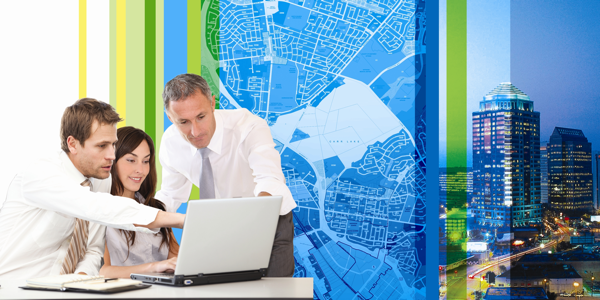
 Today, cities are growing beyond their physical limits and resource capacities. This sprawling growth encroaches on prime agricultural land and creates severe socioeconomic and environmental problems.
Today, cities are growing beyond their physical limits and resource capacities. This sprawling growth encroaches on prime agricultural land and creates severe socioeconomic and environmental problems.

Today, cities are growing beyond their physical limits and resource capacities. This sprawling growth encroaches on prime agricultural land and creates severe socioeconomic and environmental problems.
To combat these problems, smart cities are using geospatial technology and collaborative planning techniques to provide actionable intelligence for planners and community developers. This approach is helping them make the right decisions about where cities should grow in the future.
Using geographic information system (GIS) technology as a platform to foster collaborative planning and decision making, both planners and citizens can work together to foster healthy growth and desired future conditions.
Planning with People
Planners and policy makers must listen carefully to the voices of the citizens they serve, which is a paradigm shift from the traditional “planning for people” approach, where planners make decisions on behalf of the community. Planning with people requires engaging citizens and collaborating with them to develop solutions.
When planners fail to engage communities and only follow the status quo, the outcomes are undesirable. Planning with people involves communities from the very onset of the planning process, which must be comprehensible, transparent, legitimate, and interactive. It also means holding conversations outside traditional in-person community meetings and forums to reach across the entire community.
Planning 2.0 is an emerging trend that reflects planners’ desire to plan with the people. It has three components or levels of implementation:
Web GIS provides the means for planners to leverage Planning 2.0 with effective planning support system (PSS) platforms that cater to planning processes and workflow needs. The PSS environment fosters the bidirectional citizenry participation that is so critical today.
Engaging Citizens
To engage citizens, it is imperative to communicate in new ways and provide collaborative decision-making platforms. People are using social media to communicate every day and express things that are important to them. Why not leverage social media to empower citizens to provide input regarding what should happen in their communities?
In addition to web GIS, Planning 2.0 incorporates social media to support ongoing public participation. Feedback delivered through social media can be geographically referenced and displayed on a map so everyone can see geographic trends. A clustering of comments on a map can show community leaders areas where they need to focus their attention. Just as web GIS helps citizens understand planning issues, it also helps leaders understand their constituents and make more informed decisions.
Obtaining public feedback through social media and web GIS takes us to a whole new level of democracy, where more citizens are increasingly empowered to help shape the decision-making process and define desired future conditions.
Planners need to effectively predict and respond to chronic urban problems and future market fluctuation. Their success in combating these problems is largely determined by their ability to communicate ideas and proactively seek public support to execute them. Listening to the public is especially important, because planners do not plan for themselves—they plan for people. People are flocking to new forms of communication to engage with government; now it’s up to planners to embrace them.